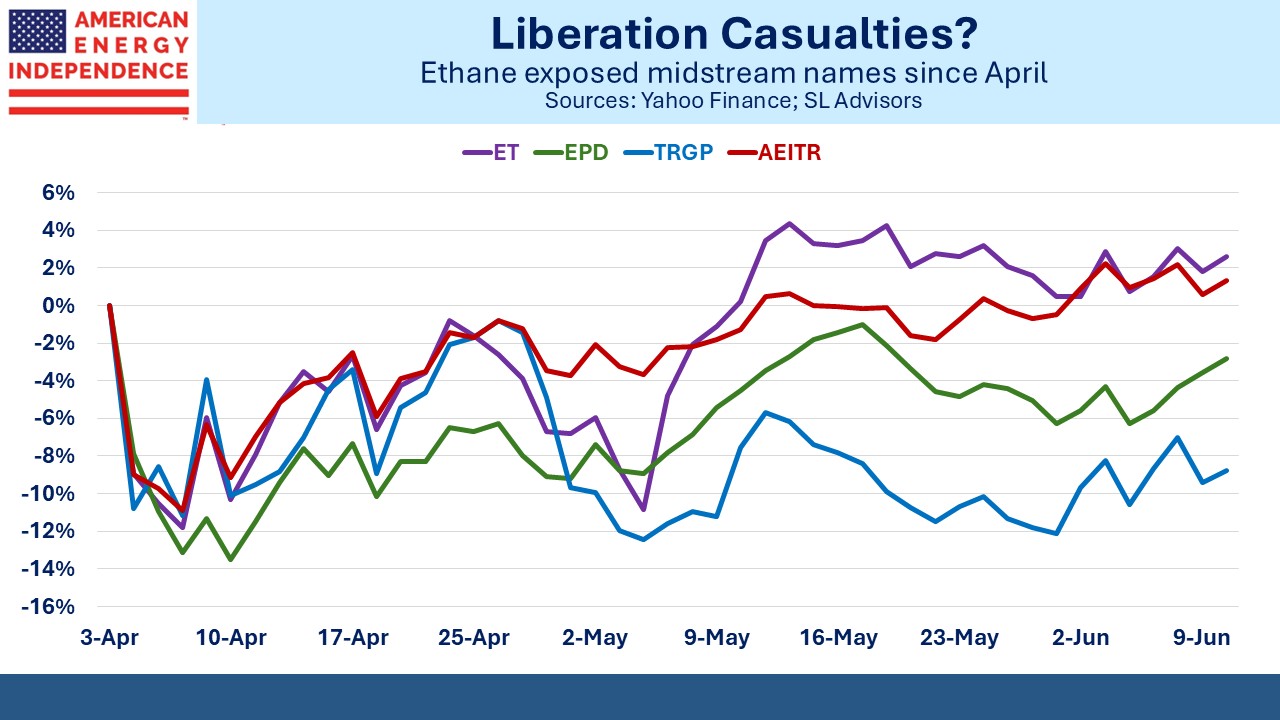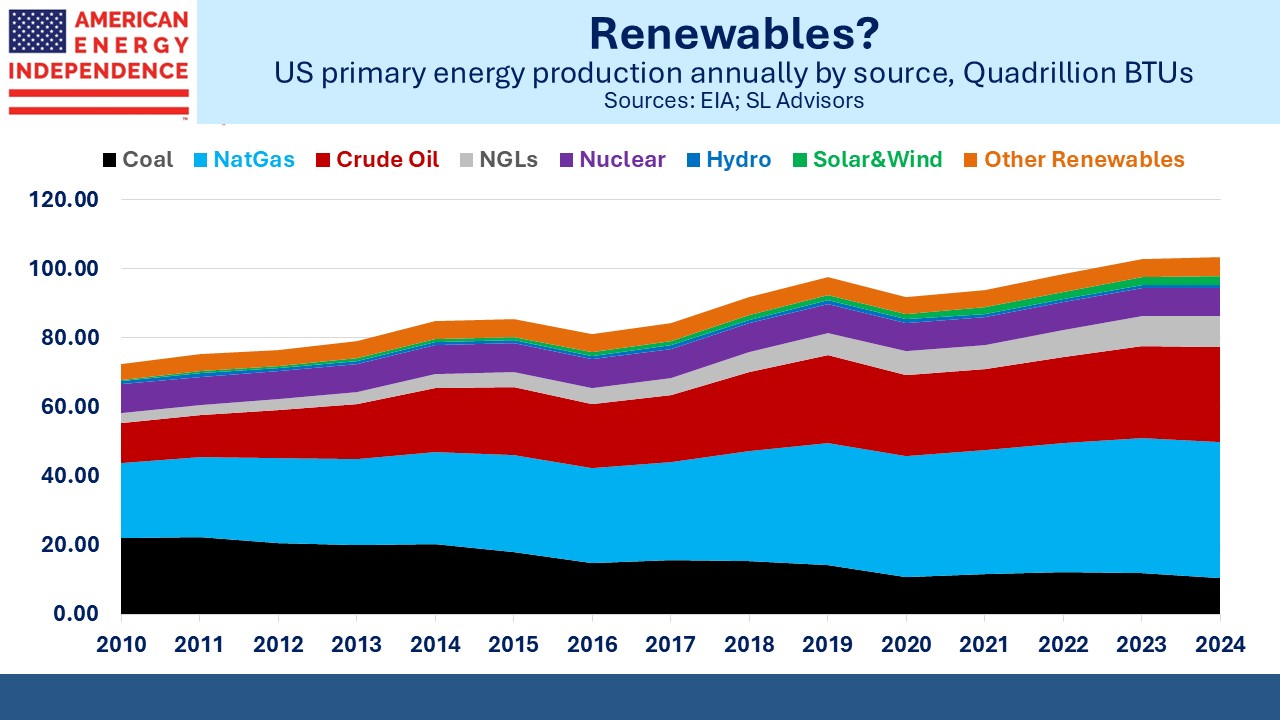The Ethane Standoff
All over the world plastics are manufactured using derivatives of crude oil. Along with cement, steel and fertilizer these are what Vaclav Smil refers to as the four pillars of civilization. Modern life couldn’t exist without them. Renewables are largely irrelevant to their production. Anybody who studies how we use hydrocarbons must conclude, as we have, that they are irreplaceable.
The American shale revolution (and it is uniquely American) unleashed new supplies of oil, gas and Natural Gas Liquids (NGLs). Methane, or natural gas, is the simplest hydrocarbon with a chemical formula of CH4, combining a single carbon atom with four of hydrogen.
Where pure methane is extracted it’s called “dry gas”. It’s often found with other more complex hydrocarbons referred to as NGLs, as in the Marcellus shale in Appalachia. This is “wet gas.” Most of our ethane is now produced in the Permian in west Texas and New Mexico where it is part of the “associated gas” that comes up with crude oil.
Midstream companies separate out the individual NGLs because they’re more valuable, and in most cases can’t be left in the natural gas supplied to customers. Therefore, wet gas is generally more lucrative than dry gas. Ethane (C2H6) is the is the exception – if the price of ethane is low enough it may not be worth separating out and can remain around 10% of the gas we use for cooking, heating and power generation. This is called ethane rejection.
In recent years the US has become the global leader in ethane production. Its relative abundance here keeps the price around one third of most other industrial nations. The US petrochemical industry has grown its consumption of ethane as it’s become more available. While in most of the world plastic is manufactured using a crude oil derivative, in the US ethane is converted into ethylene and used to make plastics, chemicals and other synthetic materials.
US ethane production has tripled over the past decade, to around three Million Barrels per Day (MMB/D). Quantities of NGLs including ethane are typically measured using the energy equivalent of crude oil even though ethane is a gas and is handled like one. A “barrel” of ethane means a quantity containing 5.8 Million BTUs, the same amount of energy in a barrel of crude.
Last year US ethane exports averaged 0.49 MMB/D. China bought 46%, with Canada, India and Norway buying most of the balance. No other country exports ethane on large ships, called Very Large Ethane Carriers (VLECs). China gets virtually all its ethane from the US. Energy Transfer (ET), Enterprise Products Partners (EPD) and Targa Resources (TRGP) own the export infrastructure that facilitates ethane exports. All expect growth and have additional capacity.
Which brings us to tariffs.
Following Liberation Day in early April, investors worried that the 145% tariffs imposed by the US on China would lead to reciprocal tariffs on US exports, including ethane. However, China recognized that its petrochemical facilities set up to process ethane had no alternative supply and chose to exempt US ethane imports.
For a few weeks, this seemed to solve the problem. But last week ET disclosed that the US government had told it to obtain an export license before shipping ethane to China. EPD said they expected their request for emergency authorization to be denied, affecting three cargoes.
On the weekend there were at least seven ships loaded with ethane waiting near the Gulf coast for US approval to sail to China. For now, neither country has any obvious alternative to trading ethane with one another.
ET, EPD and TRGP, the midstream companies with the most exposure to ethane exports, all lagged the sector following April 2, although ET has since rebounded. None of them report ethane revenues separately. They include it within NGLs, which last year were around 25% (ET) and 40% (EPD) of revenues. Most of this activity was domestic so exports were a small portion. TRGP separates out NGL storage, terminaling and export, which was 3% of total revenues.
There are no winners from the disruption of US-China ethane trade. We think it’ll be resolved soon, perhaps as part of the bilateral talks currently taking place in London.
I’ll close by providing a chart of US energy production by source since 2010. We’ve added 17.4 Quadrillion BTUs (“Quads”) of natural gas and 2.25 Quads of solar plus wind, which were combined into a single category on the chart to render them visible. America’s most important energy story continues to be The Natural Gas Energy Transition.
We have two have funds that seek to profit from this environment:

